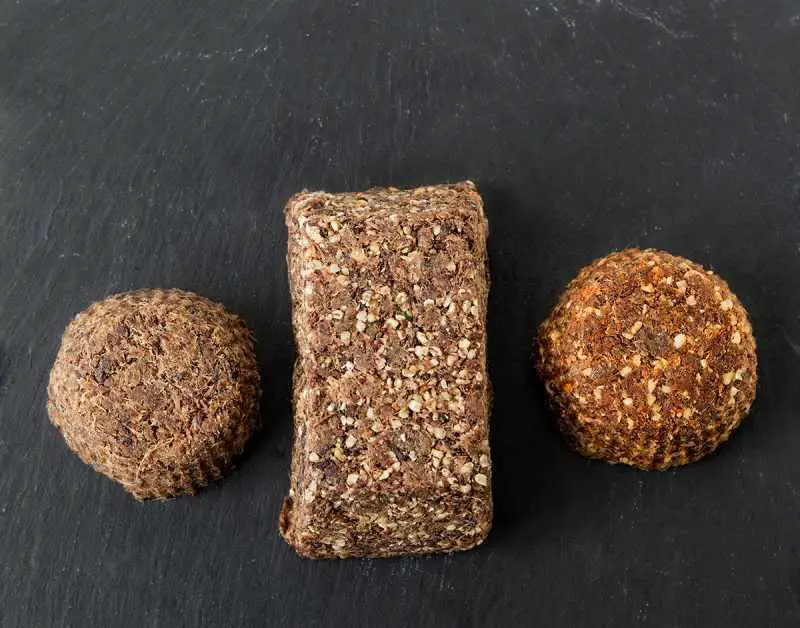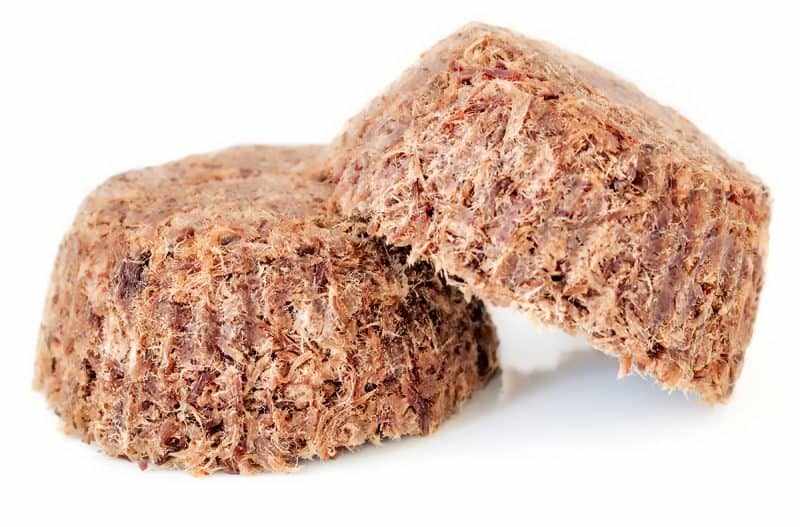If you’re an avid outdoorsman, survivalist, or simply someone seeking a nutrient-dense, shelf-stable snack, learning how to make homemade pemmican should be on your culinary bucket list. This time-honored delicacy, dating back centuries, has sustained indigenous tribes, explorers, and adventurers through arduous journeys and harsh conditions. Packed with a potent blend of protein, fats, and carbohydrates, pemmican offers a concentrated source of energy, making it an ideal companion for your next excursion or a handy backup for emergency situations.

Benefits of Pemmican
-
Unparalleled Longevity: Properly prepared pemmican can endure for years, even decades, without spoiling, thanks to its lack of moisture and the preservative properties of its ingredients.
-
Nutritional Powerhouse: A single serving of pemmican packs a punch, providing a balanced mix of macronutrients essential for sustaining energy levels and fueling your body during demanding activities.
-
Compact and Portable: Pemmican’s dense, lightweight nature makes it an ideal travel companion, allowing you to carry a substantial amount of nourishment without weighing down your pack.
-
Versatile Ingredients: From various meats and berries to an array of spices and sweeteners, pemmican offers endless possibilities for customization, catering to diverse palates and dietary preferences.
-
Historical and Cultural Significance: By learning how to make homemade pemmican, you’ll be partaking in a culinary tradition that has sustained indigenous communities for generations, fostering a deeper connection with the land and its bounty.
Ingredients (for a standard batch)
- 1 pound (454 grams) of lean, dried meat (beef, venison, bison, or elk)
- 1 cup (150 grams) of dried berries (cranberries, blueberries, or cherries)
- 1 cup (200 grams) of rendered animal fat (beef tallow, bison fat, or bear fat)
- 1 teaspoon (5 grams) of salt (optional)
- 1 tablespoon (15 milliliters) of honey or maple syrup (optional)
Timing
- Preparation Time: 2-3 hours
- Cooking Time: 30 minutes (for rendering fat)
- Total Time: 3-4 hours
Step-by-Step Guide to Preparing Homemade Pemmican
Step 1- Dry the Meat: Begin by thinly slicing your chosen meat against the grain. Marinate it in a brine solution (water, salt, and optional seasonings) for several hours to enhance flavor and aid in drying. Arrange the slices on dehydrator trays or wire racks and dry them at a low temperature (around 155°F/68°C) until they become brittle and snap easily.
Step 2- Grind the Ingredients: Once the meat is thoroughly dried, transfer it to a food processor or blender and pulse until it forms a fine powder. Repeat this process with the dried berries, pulsing them separately to avoid clumping.
Step 3- Render the Fat: If you haven’t already acquired rendered animal fat, you’ll need to render it yourself. Cut the fat into small cubes and place them in a heavy-bottomed pan over low heat. Slowly melt the fat, allowing any impurities to separate and sink to the bottom. Strain the rendered fat through a fine-mesh sieve or cheesecloth, discarding the solids.
Step 4- Combine and Mix: In a large bowl, combine the powdered meat, dried berries, and any optional ingredients (salt, honey, or maple syrup). Gradually pour in the warm rendered fat, mixing thoroughly with a sturdy spoon or your hands until the mixture becomes a cohesive, crumbly mass.
Step 5- Shape and Cool: Once the pemmican mixture is well-combined, you can shape it into desired forms. For traditional logs or bars, press the mixture firmly into molds or pans lined with parchment paper. Alternatively, you can roll the mixture into bite-sized balls or patties. Allow the shaped pemmican to cool and solidify at room temperature or in the refrigerator.
Step 6- Store and Enjoy: Once cooled and solidified, your homemade pemmican is ready for storage and consumption. Wrap the portions tightly in wax paper, parchment paper, or food-grade plastic wrap, and store them in an airtight container in a cool, dry place. When properly prepared and stored, pemmican can remain edible for months, or even years.

Tips for Choosing the Best Meat for Pemmican
-
Lean Cuts: Opt for lean cuts of meat with minimal fat, as excess fat can cause the pemmican to spoil more quickly. Trim any visible fat before drying the meat.
-
Grass-Fed and Organic: For optimal nutritional value, consider using grass-fed or organic meats, which are typically higher in beneficial nutrients like omega-3 fatty acids and vitamins.
-
Wild Game: If you’re an avid hunter, using wild game like venison, elk, or bison can add an authentic touch to your homemade pemmican while providing high-quality, lean protein.
-
Avoid Poultry and Pork: Steer clear of poultry and pork, as these meats have a higher risk of harboring harmful bacteria, even when dried or rendered into fat.
Healthy Variations of Homemade Pemmican
While traditional pemmican recipes call for a simple combination of meat, berries, and fat, you can experiment with various healthy additions to suit your dietary preferences or cravings:
-
Nuts and Seeds: Incorporate finely ground nuts (almonds, pecans, or walnuts) or seeds (sunflower, pumpkin, or chia) for an extra boost of protein, healthy fats, and fiber.
-
Spices and Herbs: Elevate the flavor profile by adding dried spices like cinnamon, ginger, or cayenne pepper, or finely chopped dried herbs like rosemary or thyme.
-
Superfoods: Enhance the nutritional value by incorporating powdered superfoods like spirulina, maca, or acai berries, which offer an array of vitamins, minerals, and antioxidants.
-
Vegetarian/Vegan Options: While not strictly traditional, you can create vegetarian or vegan versions of pemmican by substituting the meat with dehydrated plant-based protein sources like nuts, seeds, or soy-based meat alternatives, and using coconut oil or vegan-friendly alternatives to animal fat.
How to Store and Preserve Homemade Pemmican
Proper storage is crucial for ensuring the longevity and safety of your homemade pemmican. Follow these guidelines for optimal preservation:
-
Airtight Containers: Store pemmican in airtight containers or bags, such as glass jars, food-grade plastic containers, or vacuum-sealed bags, to prevent air exposure and moisture intrusion.
-
Cool, Dry Environment: Keep your pemmican in a cool, dry place, away from direct sunlight and moisture. Ideal storage temperatures range from 50°F to 70°F (10°C to 21°C).
-
Freezer Storage: For extended shelf life, consider storing pemmican in the freezer, where it can remain edible for several years without compromising its quality or flavor.
-
Inspect Before Consuming: Before consuming stored pemmican, inspect it for any signs of spoilage, such as mold, discoloration, or an off odor. If any of these are present, discard the pemmican immediately.
Traditional vs. Modern Pemmican Recipes
While the core ingredients of pemmican (meat, berries, and fat) remain consistent, traditional and modern recipes may differ in their preparation methods and additional components:
-
Traditional Pemmican: Historically, indigenous tribes would dry meat over an open fire or in the sun, rendering fat from the same animal source. Berries were often foraged from the wild, and minimal seasoning, if any, was added.
-
Modern Pemmican: Contemporary recipes often utilize dehydrators or ovens for drying meat and berries, while rendered fat may come from various animal sources. Modern variations may also incorporate additional sweeteners (honey, maple syrup), spices, nuts, or superfoods for added flavor and nutrition.
Regardless of the recipe you choose, the fundamental principles of thorough drying, proper fat rendering, and careful storage remain essential for creating a safe and long-lasting pemmican.
How to Incorporate Pemmican into Your Diet
Pemmican’s versatility extends beyond its role as a survival food or trail snack. Here are some creative ways to incorporate this nutrient-dense delicacy into your daily diet:
-
Breakfast Boost: Crumble pemmican over oatmeal, yogurt, or smoothie bowls for a protein-packed start to your day.
-
Trail Mix Alternative: Mix pemmican with nuts, seeds, and dried fruits for a nutrient-dense and portable snack.
-
Soup or Stew Thickener: Add pemmican to soups or stews for a rich, hearty texture and a boost of protein and healthy fats.
-
Energy Balls: Roll pemmican into bite-sized balls and coat them with shredded coconut, cocoa powder, or crushed nuts for a portable, energy-dense snack.
-
Baking Ingredient: Incorporate pemmican into baked goods like muffins, bread, or granola bars for a nutritious twist on your favorite recipes.
Nutritional Facts (per 2 oz/56g serving)
- Calories: 388
- Total Fat: 28g
- Saturated Fat: 10g
- Cholesterol: 60mg
- Sodium: 300mg
- Total Carbohydrates: 1g
- Dietary Fiber: 1g
- Total Sugars: 0g
- Protein: 34g
Note: Nutritional values may vary depending on the specific ingredients used and their quantities.
Conclusion
Mastering the art of how to make homemade pemmican is a rewarding endeavor that connects you with a rich culinary heritage while providing a nutrient-dense, long-lasting food source for your adventures or emergency preparedness. By following the step-by-step guide and embracing the versatility of ingredients, you can craft a customized pemmican that caters to your taste preferences and dietary needs. Embrace this ancient sustenance and embark on a journey of self-sufficiency and culinary exploration.
FAQs
Can pemmican be cooked or heated before consumption?
While pemmican can be consumed raw, it can also be lightly heated or cooked if desired. However, excessive heat may cause the fats to separate and alter the texture and flavor.
How long does homemade pemmican last?
When properly prepared and stored in airtight containers in a cool, dry environment, homemade pemmican can last for several months, or even years, without spoiling.
Is pemmican suitable for vegetarians or vegans?
Traditional pemmican recipes rely on meat and animal-derived fats. However, vegetarian or vegan versions can be created by substituting plant-based protein sources and using alternatives to animal fats, such as coconut oil.
Can pemmican be made with other types of meat or berries?
Yes, pemmican recipes can be adapted to incorporate various types of lean meats (beef, venison, bison, elk) and dried berries or fruits (cranberries, blueberries, cherries, etc.), allowing for endless flavor combinations.
Is it necessary to add sweeteners or spices to pemmican?
No, the addition of sweeteners (honey, maple syrup) or spices is optional and based on personal preference. Traditional pemmican recipes often rely solely on the natural flavors of the meat, berries, and fat.
Can pemmican be used as a complete meal replacement?
While pemmican is a nutrient-dense food, it should not be relied upon as a sole source of sustenance for extended periods. A balanced diet with a variety of whole foods is recommended for optimal health and well-being.
